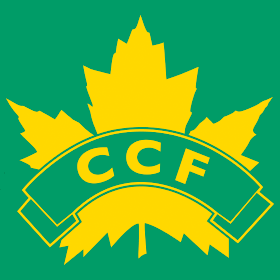
The Co-operative Commonwealth Federation (CCF) was a social-democratic and democratic socialist political party in Canada. The CCF was founded in 1932 in Calgary, Alberta, by a number of socialist, agrarian, co-operative, and labour groups, and the League for Social Reconstruction. In 1944, the CCF formed the first social-democratic government in North America when it was elected to form the provincial government in Saskatchewan. In 1961, the CCF was succeeded by the New Democratic Party (NDP). The full, but little used, name of the party was Co-operative Commonwealth Federation (Farmer-Labour-Socialist).
Chief Buffalo Child Long Lance, born Sylvester Clark Long, was an American journalist, writer and actor from Winston-Salem, North Carolina who, for a time, became internationally prominent as a spokesman for Indian causes. He published an autobiography, purportedly based on his experience as the son of a Blackfoot chief. He was the first presumed Native American admitted to the Explorers Club in New York City. In reality a non-Native, he had claimed to be of mixed Cherokee, white and black heritage, at a time when Southern society imposed strict binary divisions of black and white in a racially segregated society. After his tribal claims were found to be false, he was dropped by these same social circles to which he had gained entry.
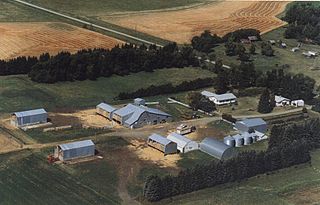
The Canadian Prairies is a region in Western Canada. It includes the Canadian portion of the Great Plains and the Prairie Provinces, namely Alberta, Saskatchewan, and Manitoba. These provinces are partially covered by grasslands, plains, and lowlands, mostly in the southern regions. The northernmost reaches of the Canadian Prairies are less well known. They are marked by forests and more variable topology. If the region is defined to include areas only covered by prairie land, the corresponding region is known as the Interior Plains. Geographically, the Canadian prairies extend to northeastern British Columbia, but this province is not included in a political manner.
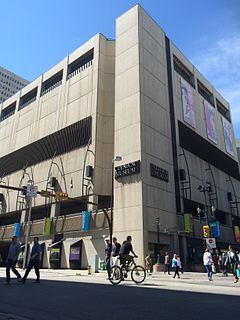
The Glenbow Museum is an art and history museum in the city of Calgary, Alberta, Canada. It was established by philanthropist Eric Lafferty Harvie.
The 218th Battalion, CEF, was a unit in the Canadian Expeditionary Force during the First World War. Based in Edmonton, Alberta, the unit began recruiting in early 1916 in that city. After sailing to England in February 1917, the battalion was transferred to the 8th Battalion, Canadian Railway Troops. The 218th Battalion, CEF, had one officer commanding: Lieutenant-Colonel J. K. "Peace River Jim" Cornwall.

The County of Warner No. 5 is a municipal district in southern Alberta, Canada. Located in Census Division No. 2 just north of the United States border, its municipal office is located in the Village of Warner.
Clayton Hare was a Canadian music teacher, conductor, and violinist. He was the third principal conductor of the New Brunswick Youth Orchestra and taught at a number of universities including Mount Allison University, the University of Portland, and Mount Royal College.

The Aryan Guard is a neo-Nazi group based in Alberta, Canada, whose members are primarily located in the city of Calgary. It was founded in late 2006, and was reported to have disbanded in 2009 as a result of internal conflict including pipe bombing attacks. However, late in 2009 the group denied this and claimed it was still operating.
This is a timeline of the history of Calgary.
Hugh Aylmer Dempsey, is a Canadian historian, an author and the Chief Curator Emeritus of the Glenbow Museum in Calgary, Alberta. Dempsey has authored more than 20 books, focusing primarily on the history of people of the Blackfoot Confederacy. He received an honorary doctorate from the University of Calgary and was made an honorary chief of the Kainai Blackfoot in 1967. For his contributions to the study of the Plains Indians, Dempsey was awarded membership in the Order of Canada in 1975.
The following is a bibliography of Alberta history.

Glenbow Ranch Provincial Park is a provincial park in the Calgary Region of Alberta, Canada. The majority of the park is located on the north bank of the Bow River within Rocky View County. Portions of the eastern and western extremeties of the park are located within the City of Calgary and the Town of Cochrane respectively.
Rita McKeough is a Canadian interdisciplinary artist, musician and educator who frequently works in installation and performance.
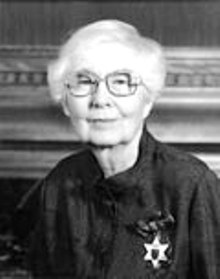
Reta Cowley was a Canadian painter. She is known for her watercolors of the prairie country around Saskatoon, Saskatchewan, which capture the unique qualities of space and light.
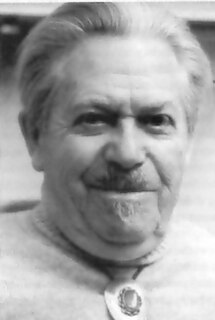
Illingworth "Buck" Kerr was a Canadian painter, illustrator and writer. He is best known for his landscape paintings of the Saskatchewan and Alberta prairies and foothills.

Mary Annora Brown (1899–1987), known as Annora Brown, was a Canadian visual artist whose work encompassed painting and graphic design. She was best known for her depictions of natural landscapes, wildflowers, and First Nations communities in Canada. Much of her work thematically explored Albertan identity, though she remains relatively obscure in discussions of Canadian art.
Nancy Tousley is an award-winning senior art critic, journalist, art writer and independent curator whose practice has included writing for a major daily newspaper, art magazines, and exhibition catalogues.
The Canadian Western Jewish Times, established in 1914, was the first Jewish newspaper published in English in Western Canada and the earliest attempt to produce a Western Canadian regional Jewish newspaper in English. Like many other efforts to publish Jewish newspapers in Canada between 1891 and the first decades of the 20th Century, it proved to be ephemeral.
Karilynn Ming Ho is a Vancouver-based interdisciplinary artist working with video art, performance, multi-media installation, theatre, sculpture and collage. Her work draws on existential themes as a means to examine formal and conceptual ideas around performativity as it relates to screen culture and the mediated body.








